$999. That was a lot of money to ask for a smartphone before the coronavirus pandemic tanked economies the world over, and it’s a lot of money today. It’s what the Galaxy Note 20 costs, and as we have made clear on many occasions before, Samsung has made plenty of questionable decisions for the spec sheet of its non-Ultra Note flagship.
A glass back has become synonymous with flagship smartphones in the last couple of years, but the Galaxy Note 20 doesn’t have one. High refresh rate screens are all the craze, and the Galaxy Note 20 doesn’t have one. Some of the limitations Samsung introduced with the Galaxy Note 10 last year, such as the lack of expandable storage or just Full HD display resolution, have also carried over to the Note 20. Samsung has even downgraded the slab of glass on the front: The Note 10 was protected by Gorilla Glass 6, but the Note 20 is protected by the older Gorilla Glass 5.
The Galaxy Note 20 also doesn’t get the new low latency S Pen that its Ultra sibling offers, but it does have some flagship-grade specifications. For example, it’s got the same Exynos 990 or Snapdragon 865+ processor as the Note 20 Ultra, a triple camera setup with up to 30x zoom like the Galaxy S20 and S20+, a large battery with 25W super fast charging, and features like water resistance, stereo speakers, and wireless charging that have been mainstays of Samsung’s top-end phones these last few years.
Of course, the question on everyone’s mind is whether all those features are enough to justify the $999 price tag of the Galaxy Note 20. The answer is in this review, so let’s get started.
Galaxy Note 20 design
I’ve said this before, and I’ll say it again: The plastic back of the Galaxy Note 20 should not be considered a negative. Yes, you expect glass when you pay a thousand dollars for a phone, but the Note 20’s plastic back doesn’t feel cheap, even if it’s not as smooth and luxurious as glass, and it offers a couple of advantages. First, if you drop the phone, you won’t end up shattering something on the back. Well, the glass covering the cameras could get damaged, but the rest of the rear side won’t. Second, the plastic hides fingerprint smudges a lot better than glass and is also less prone to scratch if you tend to use your phones without a case.
In fact, that’s the best thing about the plastic back: You don’t need to slap a case on it. The Note 20 offers excellent grip, and at no point did I feel like it would slip out of my hand. It’s refreshing after so many years of using flagship phones with glass on the front and back, and I actually hope this isn’t going to be a one time thing. In case you’re wondering, the Note 20 does have a metallic frame, and everything is put together incredibly well, with no sharp edges or corners anywhere on the device.
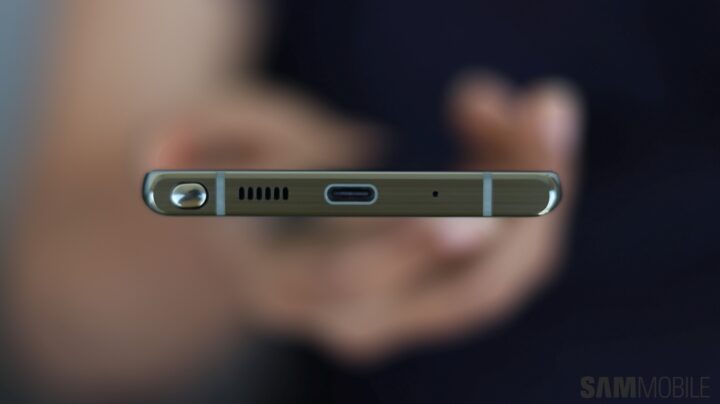
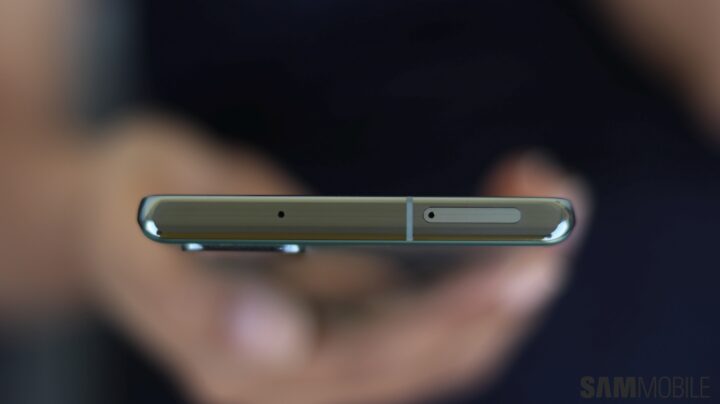
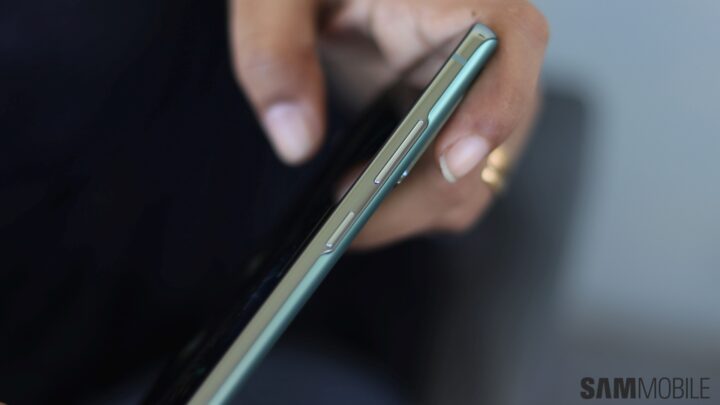
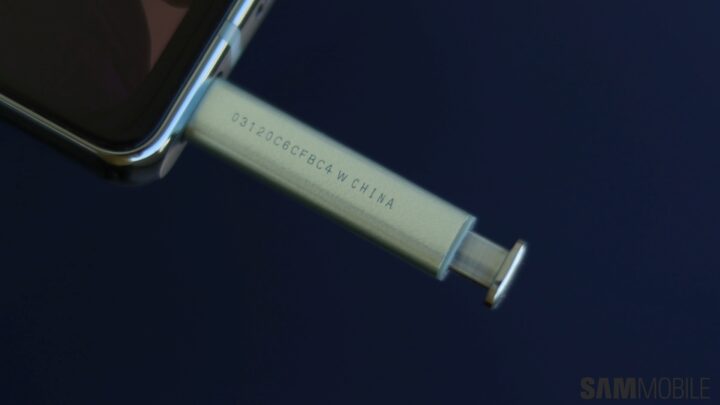
It’s also worth mentioning that the Galaxy Note 20 looks great from the back no matter which color you might pick up. I got the Mystic Green version for our review, and thanks to the matte finish, it looks absolutely striking and classy. The camera glass is a darker shade of green, and the contrast adds extra charm to the whole thing. The black version of the phone looks solid as well, and you can check out photos of that one in our Galaxy Note 20 hands-on experience from when the Note 20 series was first announced.
Despite being a sequel to the Note 10, the Note 20’s 6.7-inch display makes it anything but compact, and that might disappoint folks who had been expecting Samsung to continue the trend of making small (by today’s standards) Note flagships. Thankfully, the Galaxy Note 10 is still available for purchase in most markets, and if a small phone with an S Pen is what you’re after, I would suggest not reading any further and just getting the Note 10 instead. Remember, Samsung is now going to offer three Android OS updates for its flagships, so the Note 10 will be getting major updates for the next two years.
Galaxy Note 20 display
The 6.7-inch Super AMOLED Plus Infinity-O display on the Galaxy Note 20 is a flat panel, and right off the bat, that makes for an important distinction over the Note 20 Ultra: Accidental screen presses are not an issue. However, I’m disappointed that Samsung didn’t try to make the camera punch hole smaller than it is. The size of the punch hole is the same as it was on the Note 10, but it seems bigger in use because the Note 20’s display isn’t curved and, therefore, has less screen estate on either side of the camera cutout. To be fair, this won’t bother everyone, but it does stand out because even Samsung’s mid-range phones have more petite punch holes these days.
It doesn’t end there: The Note 20’s display runs at a standard 60Hz refresh rate instead of 120Hz, so despite the same internals, the Note 20 Ultra feels more quick and smooth in use. The Note 20’s display is also limited to Full HD resolution, and it’s protected by the old Gorilla Glass 5. Yes, many cost-cutting measures have been applied here, though thankfully, the quality of the display is still as awesome as you have come to expect from Samsung’s flagship devices. You get punchy but not overly saturated colors, high brightness levels, deep blacks, and wide viewing angles.
Sitting under the display is an ultrasonic in-screen fingerprint reader that can be found on every flagship phone Samsung has launched since the Galaxy S10, including the Note 20 Ultra. Its performance isn’t any different, either. Its accuracy can be hit and miss unless you register the same finger multiple times and it’s not very quick, and we’re going to keep calling it out for being a less-than-ideal solution until Samsung decides to switch to a better fingerprint sensor, like the second generation of the ultrasonic sensor or the optical fingerprint readers the company uses on its own mid-range and budget phones.
Galaxy Note 20 camera
Compared to the Galaxy Note 20 Ultra, the Galaxy Note 20’s camera specs are a lot more humble. The main camera is an 12MP unit and the zoom camera is a 64MP sensor that maxes out at 30x zoom, but the actual experience is still top-notch. It’s the same setup that Samsung used on the Galaxy S20 and Galaxy S20+, and I would suggest reading our Galaxy S20+ review to find out how all the cameras (front and back) perform since I found no discernible difference between the two devices.
For those wondering if the zoom capabilities of the Note 20 are any good when pitted against the Galaxy Note 20 Ultra, I’d say they are, at least for the asking price. No Samsung flagship phone launched before 2020 (or the new Galaxy Z Fold 2) come close, and you get excellent results at up to 10x magnification. Even 20x-30x zoom works fine if the lighting conditions are good, especially if you’re trying to read far-off text.
Samsung uses artificial intelligence to sharpen up the results after you shoot them, and while there’s clear degradation of image quality post 10x-20x zoom, all of it is still very usable, as you can see in the images below, which show a scene shot at 1x, 3x, 4x, 10x, 20x, and 30x. Just be sure you shoot pictures in daylight or well-lit indoor environments, because the zoom camera is useless at night. This rings true for both the Note 20 and Note 20 Ultra, by the way.
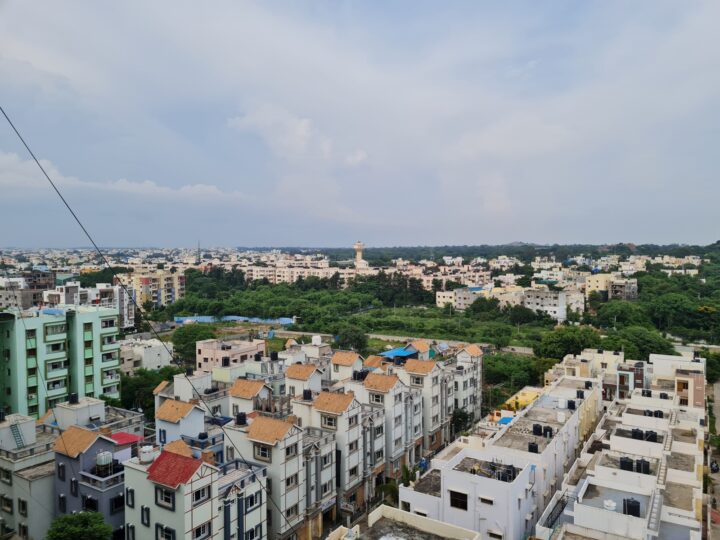
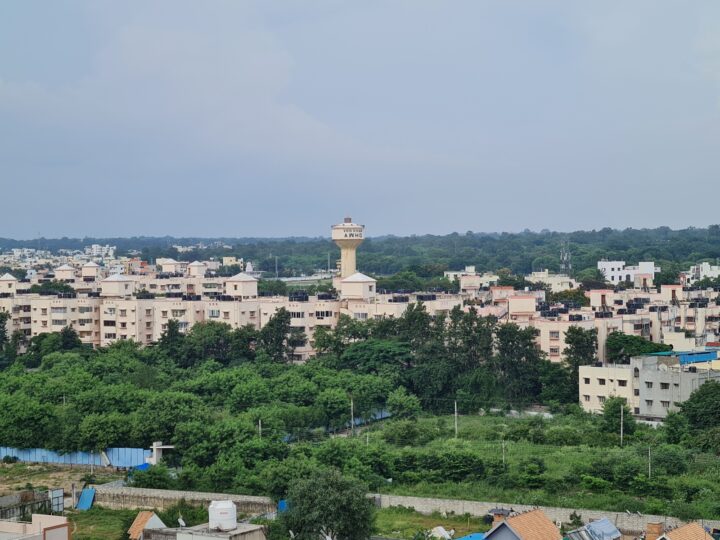
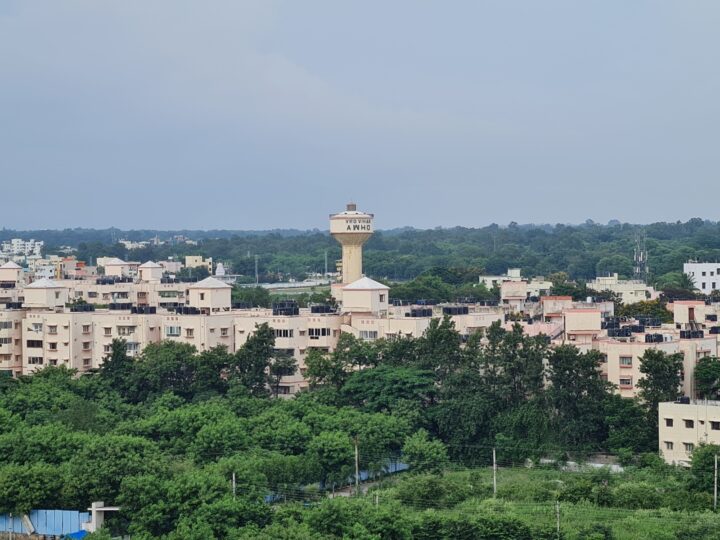



A quick note on the new and improved Pro video mode that debuted with the Galaxy Note 20 and Note 20 Ultra: Both models get the full package. Pro video mode lets you select the video resolution and change the aspect ratio to 21:9 so videos fit the entire screen, and you can even shoot 120Hz videos on the Note 20 even though it has a 60Hz display. You can also select which of the three microphones on the phone are used for audio recording or choose to record audio via Bluetooth or USB headphones.
Galaxy Note 20 performance
Performance on the Galaxy Note 20 is more or less perfect. The Exynos 990 is accompanied by 8GB of RAM no matter if you buy the LTE or 5G variant, and I never saw any lag or stutter in my time with the phone. Again, because the display refreshes at 60Hz, the Note 20 doesn’t feel nearly as quick as the Galaxy Note 20 Ultra (or any of the Galaxy S20 phones), but it’s not something you will notice if you haven’t used a phone with a higher refresh rate before. Gaming performance was excellent as well.
I should also point out that the Note 20 didn’t heat up much with indoor use, but the metal frame did get uncomfortably hot outdoors on a few occasions. That’s probably because the plastic back makes the heat bottle up inside the device instead of letting it dissipate as well as a glass back would. It didn’t happen too often, though, and while I have no clue which cooling system resides in my particular unit, I think the phone does a fine job of keep the temperatures low and the Exynos 990 no longer seems to have any problems.
Galaxy Note 20 S Pen, software, audio quality
The Galaxy Note 20 has the same software as the Galaxy Note 20 Ultra, both in general and when it comes all the S Pen functionality (including the fantastic new Samsung Notes app), and the same audio chops as well, so I’d suggest reading our Note 20 Ultra review for a detailed overview on those aspects of the phone.
However, there is an area where the S Pen on the Note 20 differs from the Ultra model, and that’s latency. The Galaxy Note 20 Ultra S Pen has a latency of 9 milliseconds (just like the Apple Pencil) while the Note 20’s S Pen has a latency of 26 milliseconds. How much difference does it make in practice? Well, thanks to a new and improved S Pen tip, the Note 20’s stylus also gives you a smooth pen-to-paper feel.
But since the display’s refresh rate is fixed at 60Hz, S Pen input doesn’t feel as snappy as it does with a 120Hz display. My wife was quick to point that out, and if you own an existing Note smartphone and love to draw or doodle with the S Pen, you will want to spend an extra $300 and get the Ultra model as it simply offers more precise stylus operation. If this is going to be your first time getting a Note, you’ll love the Note 20’s S Pen.
Galaxy Note 20 battery life
The Note 20’s battery life is excellent. Despite having the same battery capacity as the Galaxy Note 10+, it lasts considerably longer, no doubt because of the Full HD resolution and the newer Exynos chip. With light to moderately intensive use that involves some browsing, taking pictures, sending messages over WhatsApp, and viewing a few YouTube videos, the Note 20 can easily last you all day long, and I almost never found the need to charge it overnight.
Naturally, heavy use takes its toll, but even then, 12-14 hours of battery life is achievable. And thanks to 25W super fast charging, the Note 20 takes a little under 70 minutes to go from 0 to 100%. A 25W charger is included in the box (and so are wired AKG earphones, but no extra S Pen tips). You have fast wireless charging and reverse wireless charging at your disposal as well.
Galaxy Note 20 verdict
There’s no question the Galaxy Note 20 is priced too high for what it is. Everything from the 60Hz display and the Gorilla Glass 5 protection to the plastic back panel seems like an unnecessary step backwards, especially since these feature cuts were not seen on even the cheapest Galaxy S20 earlier this year. Okay, the plastic back is actually a good thing in the grand scheme of things, but not having a high refresh rate screen is downright criminal for a phone that costs a thousand dollars.
Still, the Galaxy Note 20 does have plenty to offer: A beautiful display, fast performance, excellent battery life with super fast charging, versatile cameras with great zoom up to 10x, and an improved S Pen with a more pen-to-paper feel and useful software to match. However, I can only truly recommend this phone to those who want the S Pen and high camera zoom capabilities and do not want to spend $300 extra on the Note 20 Ultra.
If it’s only the S Pen you’re after, you’re better off going for the Galaxy Note 10+ from last year, or even the Note 10 if a compact design is your preference. If it’s just improved cameras you want, choose the Galaxy S20+ (or the S20, if, again, you want a smaller phone). Or, well, if you’re just looking for a no-nonsense flagship that gets you Samsung’s revered S Pen stylus and a generally good experience and don’t want everything the Note 20 Ultra has to offer, then the Galaxy Note 20 isn’t a bad phone, only a little too expensive for its spec sheet.
P.S.: Want to know something about the Galaxy Note 20 that’s not mentioned in the review? Ask me in the comments section and I’ll do my best to answer.
| Pros | Cons |
| Big and beautiful (and flat) Super AMOLED display | No 120Hz refresh rate, Gorilla Glass 5 for screen protection |
| S Pen has a more pen-to-paper feel, paired with some useful new features | Zoom camera doesn’t always kick in before 10x in low-light situations |
| Excellent cameras, zoom works great till 10x | No microSD expansion, only 128GB of base storage in some markets |
| Plastic back doesn’t feel cheap, offers higher grip than glass | S Pen latency not as low as Note 20 Ultra |
| Excellent battery life, super fast charging | Metal frame can get uncomfortably hot at times (side effect of plastic back?) |
| Solid performance, keeps its cool most of the time | |
| Great audio through the stereo speakers and supplied AKG earphones | |
| Eligible for three major Android OS updates | |
The post Samsung Galaxy Note 20 review: Oh hey, it’s not a bad phone! appeared first on SamMobile.
from SamMobile https://ift.tt/3ibnwXQ
via IFTTT


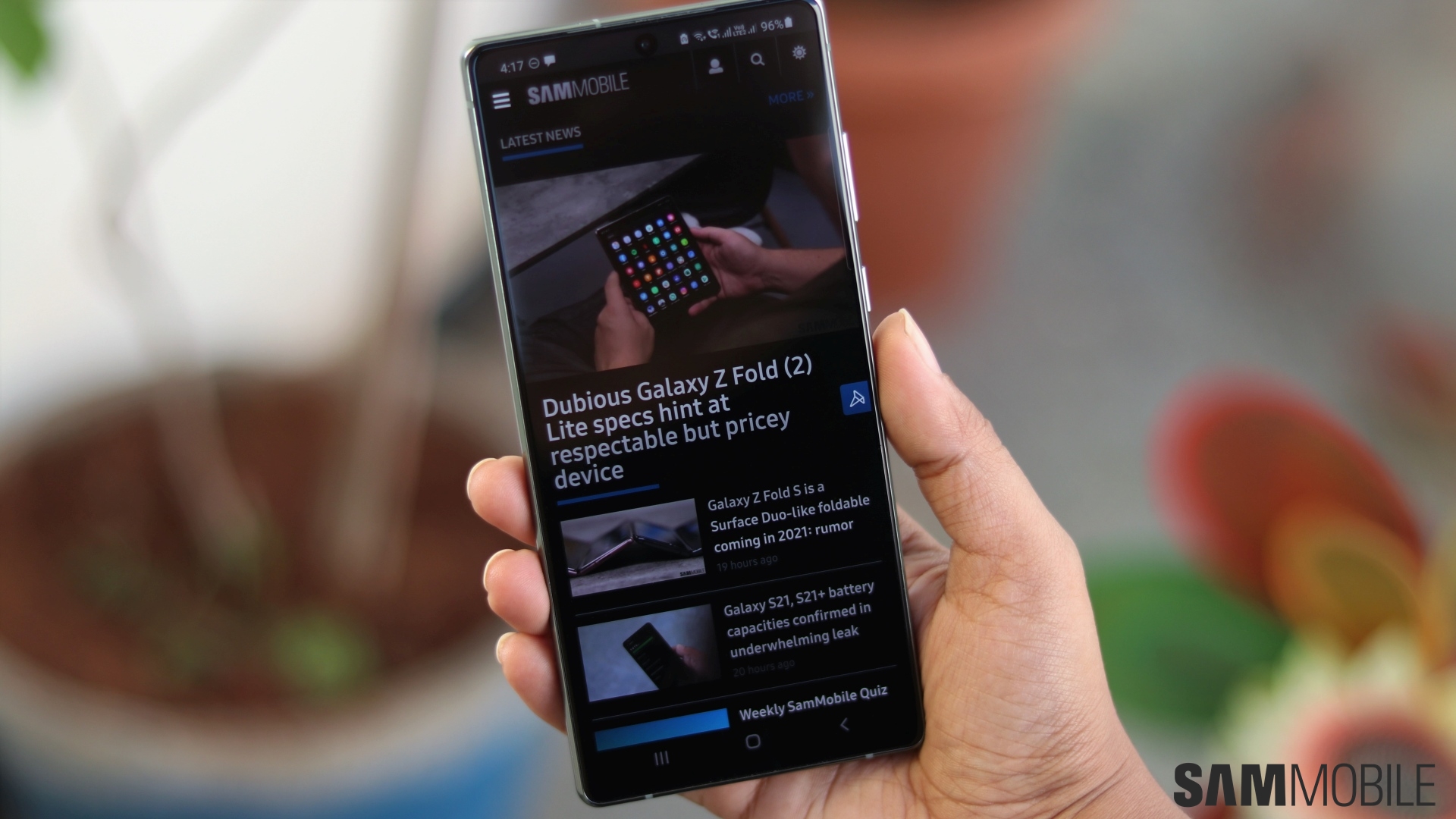
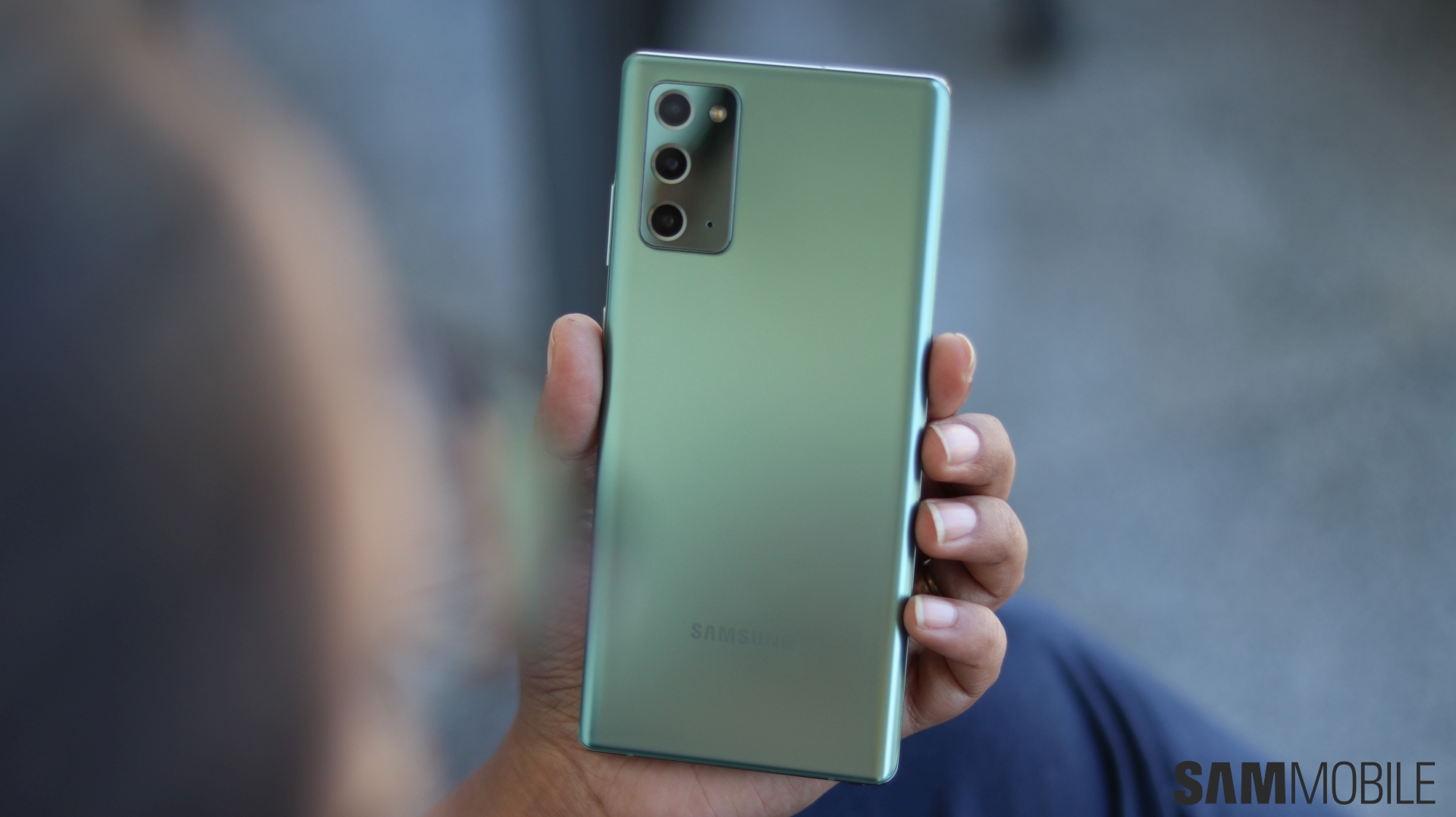
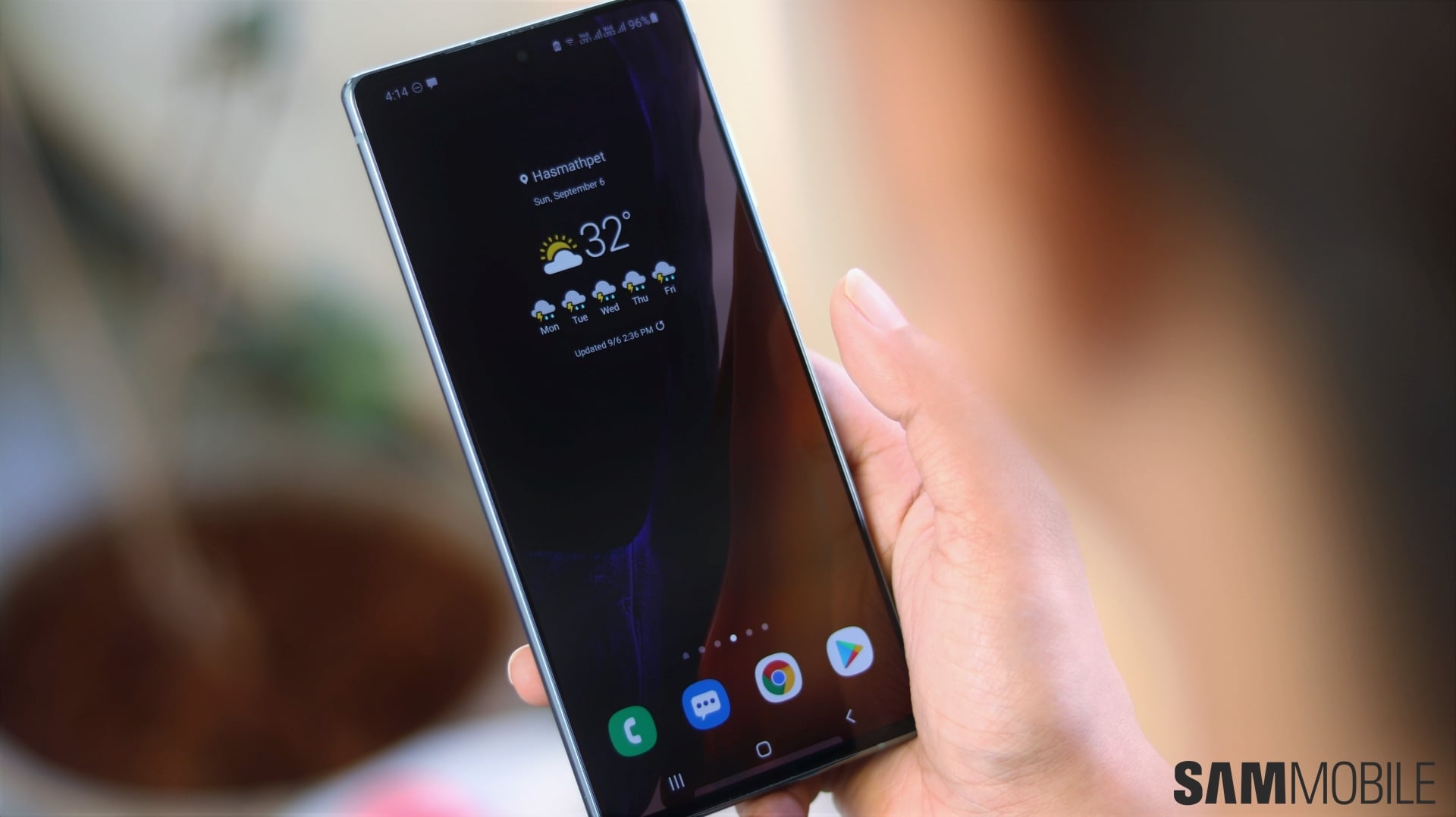
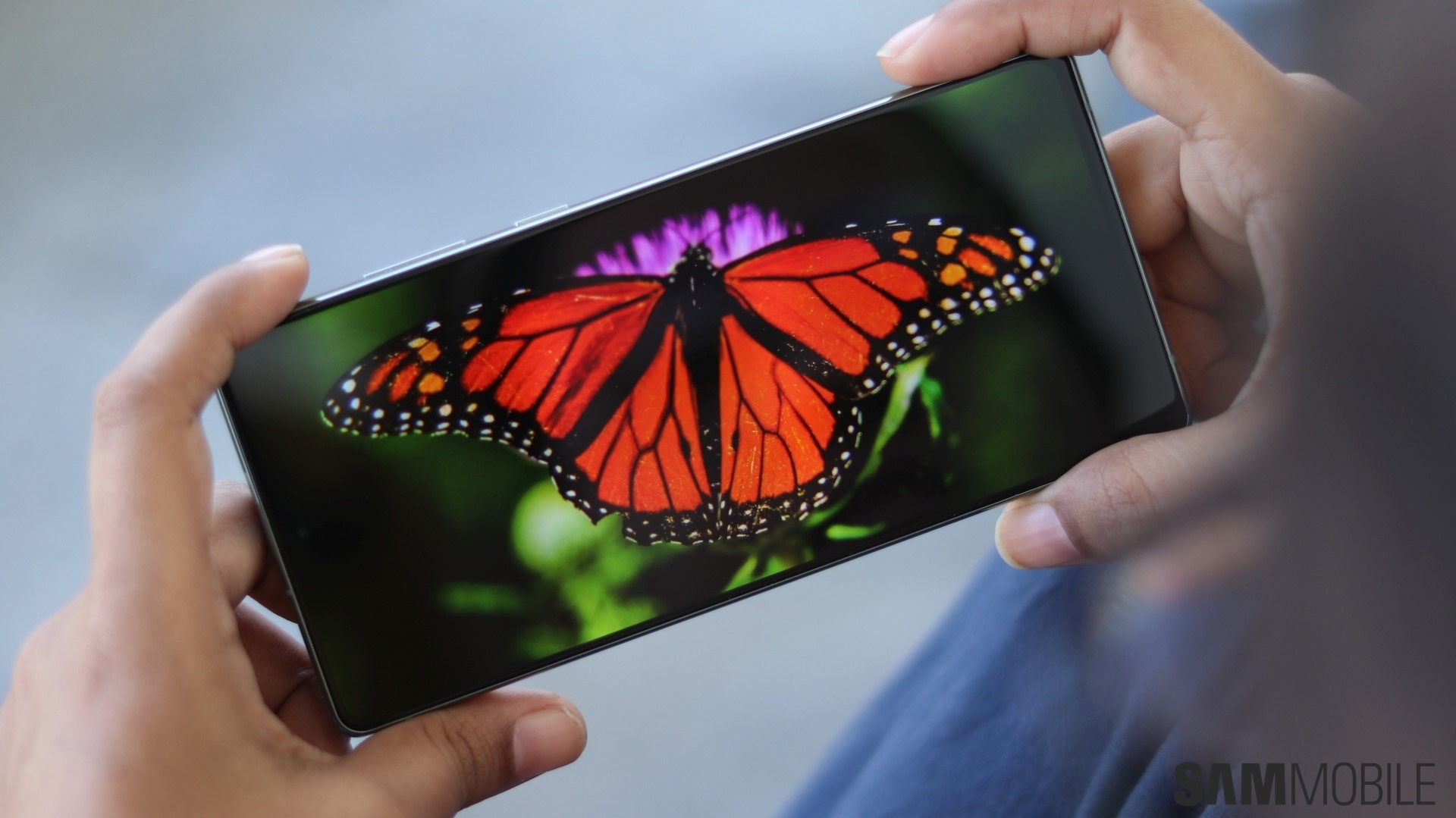
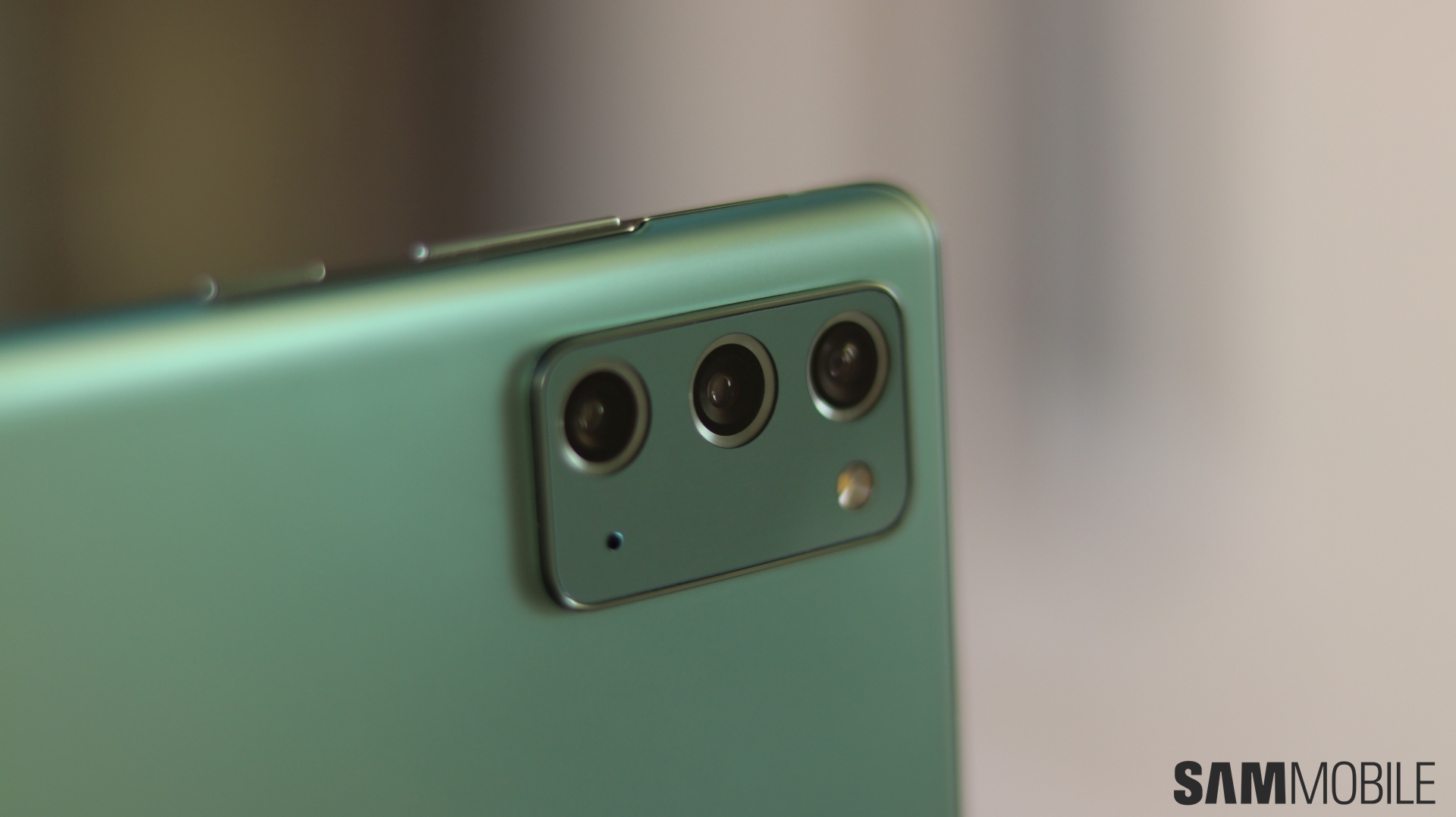
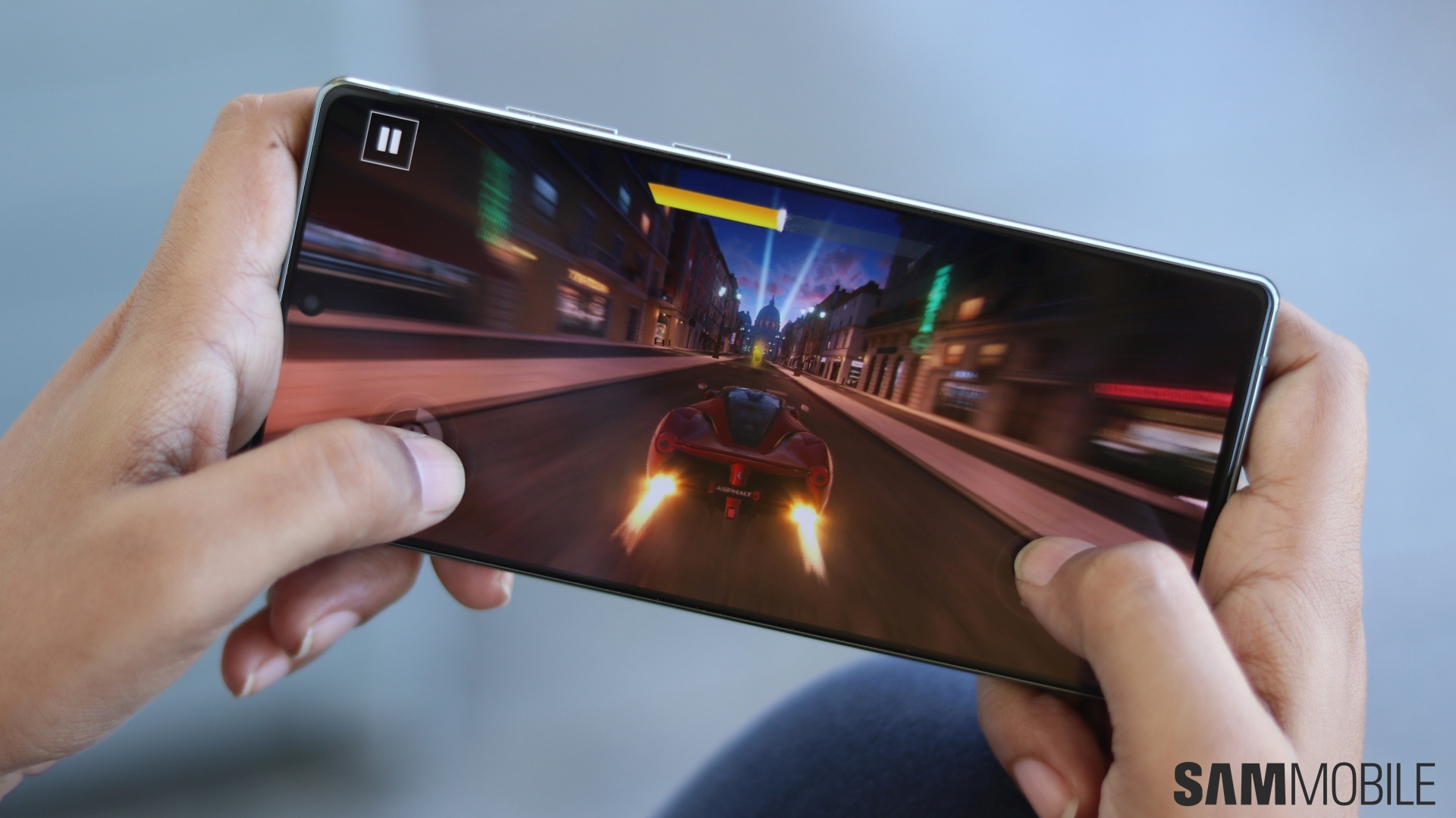
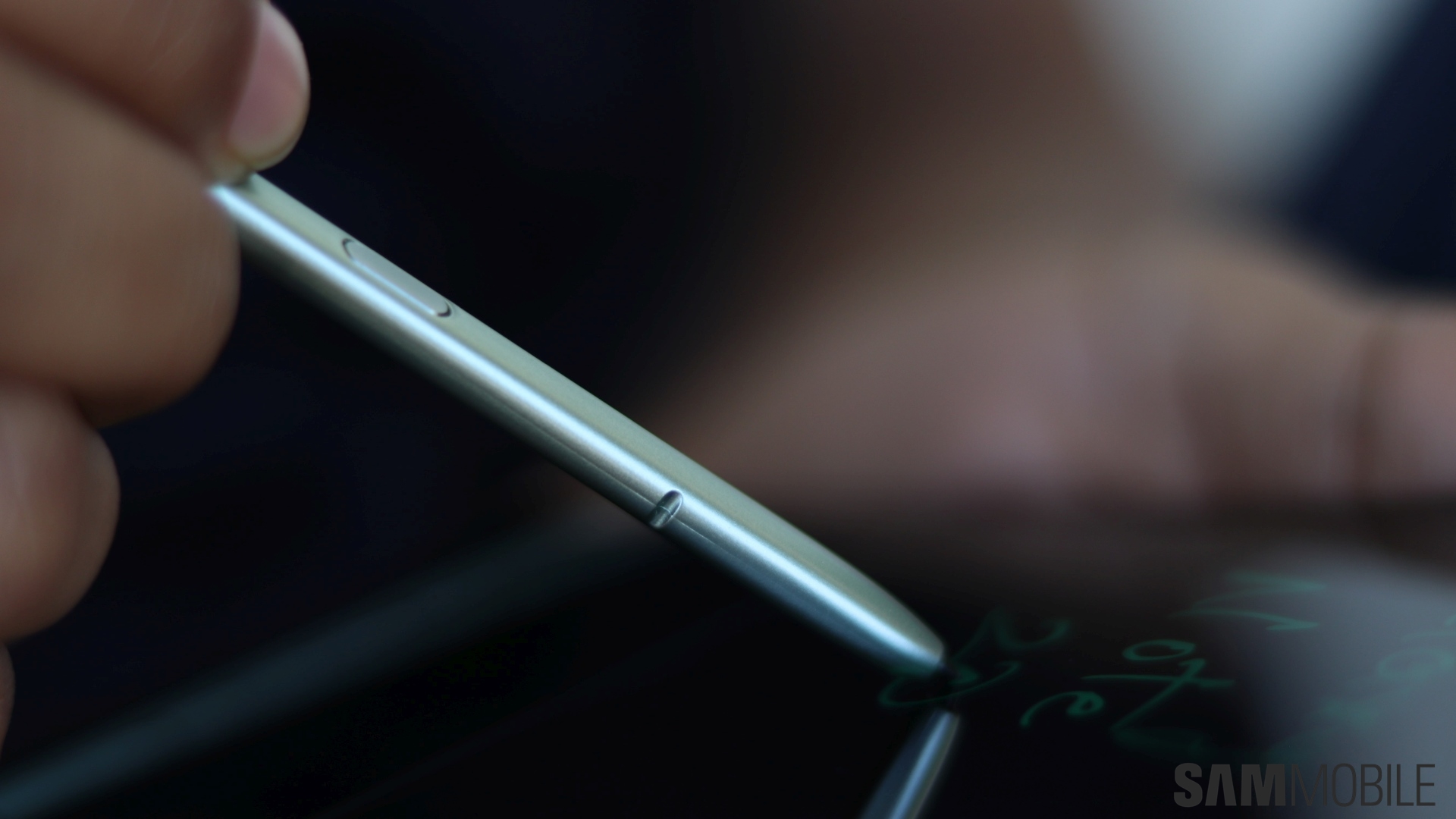
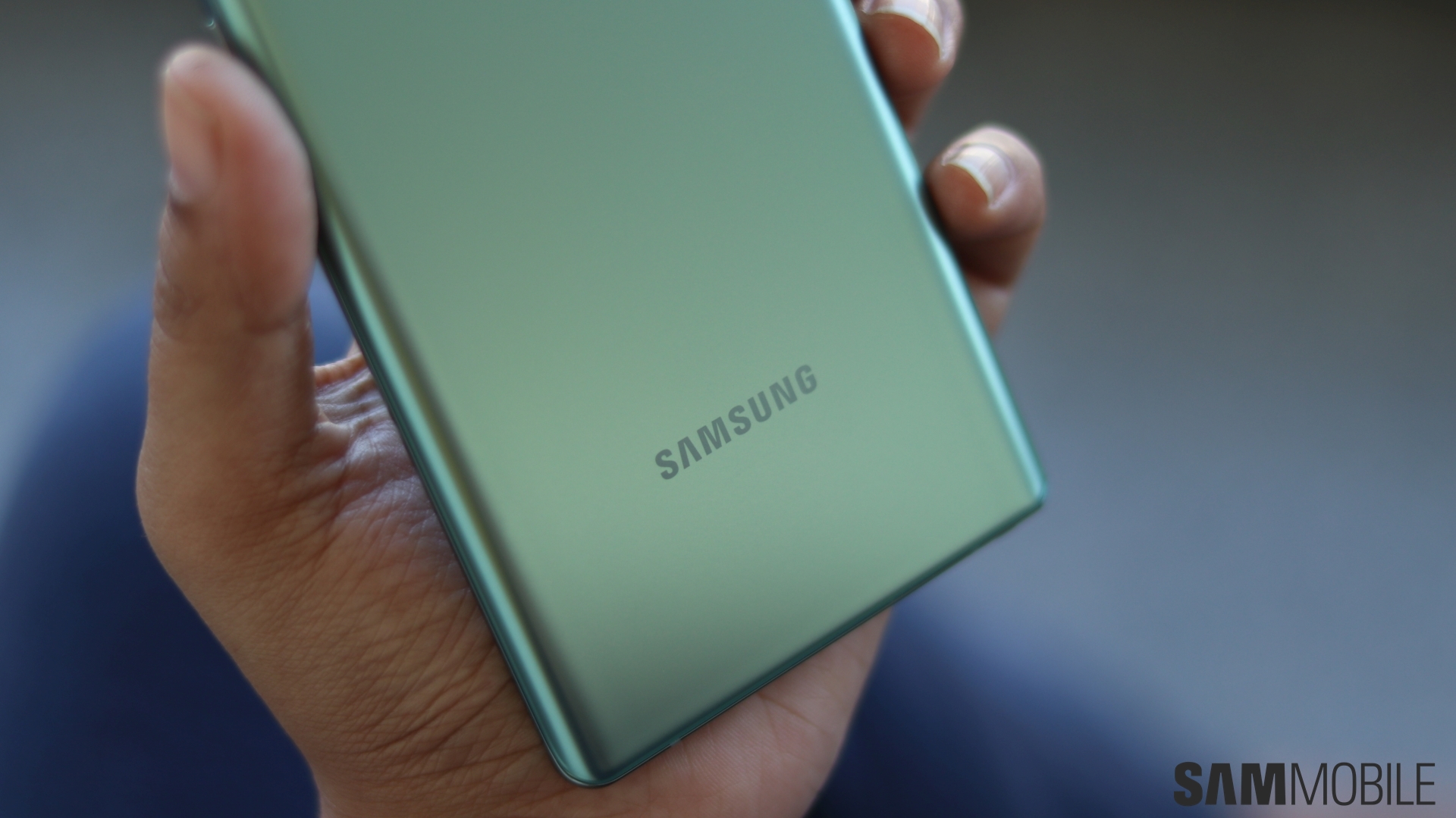
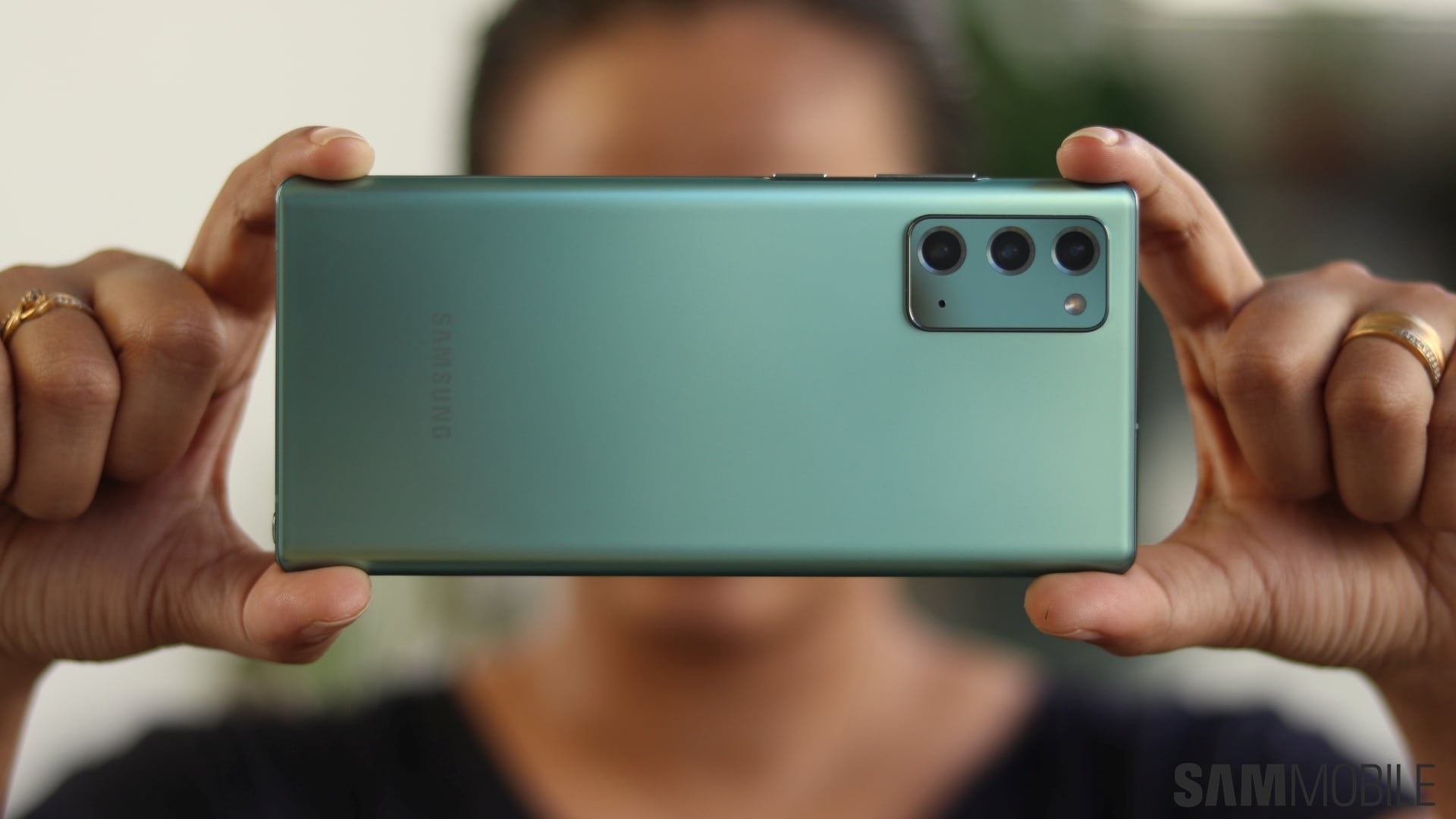




ليست هناك تعليقات:
إرسال تعليق